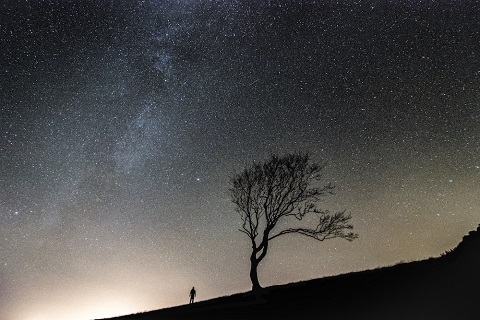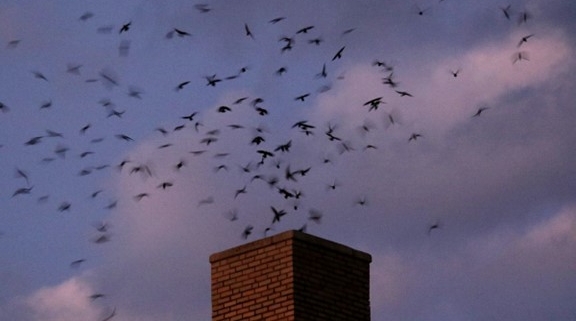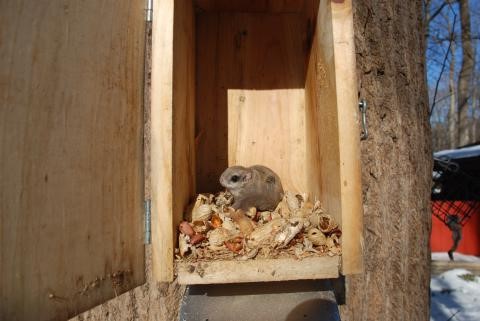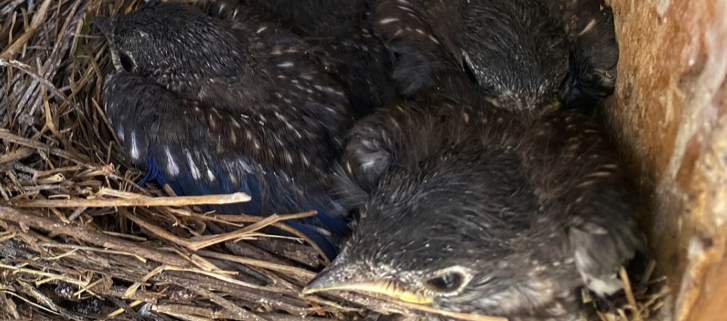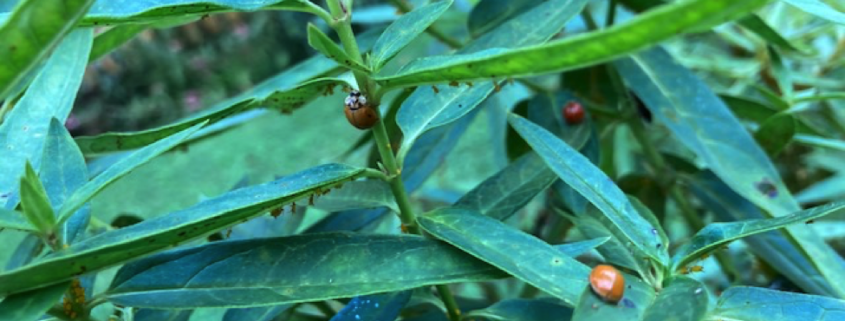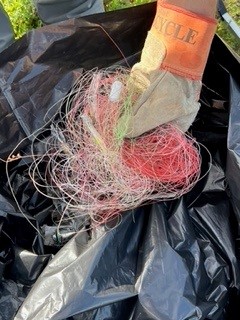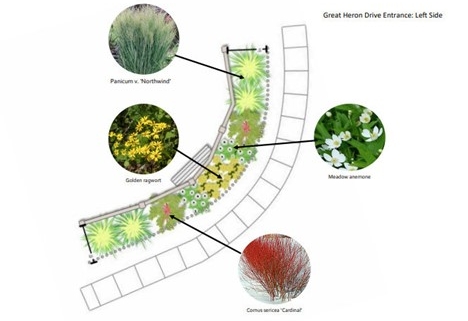McLean Gears Up for Dark Sky Celebration, November 12th
/in Curated Resources, Events, Learning Opportunities, News and Updates/by Mary Ann BushPhoto: Courtesy of Fairfax County Park Authority
Saturday, Nov. 12, 2022
6:30pm – 8:30pm
Lewinsville Historic House
1659 Chain Bridge Road
McLean, Virginia 22101
Dark skies are the natural state of nature. Over time, humans have increased the amount of light shining into the sky all night long. This excessive light has robbed us of the glimpse of our stars and endangered the natural world around us. We can have dark skies again if we learn to control light pollution with responsible outdoor lighting practices.
The Fairfax County Park Authority is partnering with the McLean Citizens Association, Dark Sky Friends and the Analemma Society to host a celebration of the importance of dark skies.
Come to the historic house in Lewinsville Park on Saturday, Nov. 12, 2022, to learn about the importance of dark skies in your community. The free event will have hands-on activities and educational opportunities about how to protect the night sky. Learn about nighttime wildlife and constellations. Come experience the night with us and enjoy a small campfire and cocoa. The event runs from 6:30 until 8:30 p.m.
There is no cost to the “Dark Sky Celebration” program, and registration is not required but is encouraged. By signing up, we can notify you in case of inclement weather. The rain date is the following day on Sunday, Nov. 13, 2022.
To learn more about the importance of dark skies, visit the Dark Skies webpage.
State of the Birds 2022 in Northern Virginia, Audubon Society of Northern Virginia
/in Curated Resources, News and Updates/by Mary Ann BushPhoto: Chimney Swifts, Gen Cvengros, Audubon Photography Awards
Following a 2019 report that we have lost 3 billion birds in 50 years in the United States and Canada, the national State of the Birds Report 2022 (released on October 12, 2022) shows that birds are declining in every habitat except wetlands, where 30+ years of conservation investment have paid off.
To see the national report, visit StateoftheBirds.org.
Here in northern Virginia, we have also lost many birds. Urban and suburban areas pose special threats to birds, including habitat loss, window and other collisions, and the spread of invasive species, including plants, insect pests, and outdoor cats.
In the face of these losses, there are many things we can do to promote bird conservation. ASNV’s Audubon at Home program advises homeowners on replacing invasive plants with natives. In addition, we advise park managers on how to manage parks for breeding birds, especially grasslands and meadows that support declining species such as Eastern Meadowlarks and American Kestrels.
The new State of the Birds report identifies 90 species that have declined more than 50% in the past 50 years. Of those species, five breed in northern Virginia and should be a special focus of conservation efforts here:
- Chimney Swift – You can help ASNV protect swifts by letting us know if you have breeding swifts or a fall roosting congregation.
- Wood Thrush and Red-headed Woodpecker – These birds need healthy forests to breed successfully.
- Prairie Warbler – This is a species that needs overgrown meadows with Eastern red cedars.
- King Rail – This a secretive wetland bird that often breeds in Occoquan Bay National Wildlife Refuge and occasionally in other wetlands nearby.
In addition to these five, our region supports important populations of migrating birds in spring and fall. These birds use small parks and even backyards while traveling on their perilous journeys, so everything we do to improve our local environment can make a big difference!
A Year in the Life of an Owl, November 2nd
/in Curated Resources, Learning Opportunities, News and Updates/by Mary Ann BushPhoto: Courtesy of the Loudoun Wildlife Conservancy
Wednesday, November 2, 2022
7:00 pm
Rust Library
380 Old Waterford Rd NW
Leesburg, VA + Google Map
Click here for more information.
Join Liz Dennison of Secret Garden Birds and Bees to follow the region’s four resident owls from winter through fall. You’ll learn what makes owls instantly recognizable and find a few surprises hidden under all those feathers! You’ll get a peek into their romantic courtships, the challenges of raising young, and the difficult transition from nestling to fledgling. And finally, you will see the quiet time when the young seek out their place in the world and the adults can (almost) relax. Four Owl Ambassadors will help Liz tell the story. You’ll meet Scarlett (Barred Owl), Hodor (Great Horned Owl), Phantom (Barn Owl), and Kvosir (Eastern Screech Owl) in the flesh, learn about each species and a little about their personal lives in captivity. You might even get to take a few selfies! This program is co-sponsored by Loudoun Wildlife Conservancy and the Loudoun County Public Library.
Invite Flying Squirrels to Your Backyard with a Feeding Box, October 23rd
/in Curated Resources, Learning Opportunities/by Mary Ann BushPhoto: Fairfax County Park Authority, Flying Squirrel in feeding box
Sunday, Oct. 23, 2022
1:00 PM – 2:00 PM
Hidden Oaks Nature Center
7701 Royce St., Annandale, Virginia
Program fee for two people: $15.00
Extra supply fee: $25.00
Click here for more information and registration details.
Flying squirrels are just as common as grey squirrels in our area. As they are nocturnal, flying squirrels often glide under our radar. From November through March, they are easy to welcome to backyards with large trees.
Families can learn proven strategies to encourage these amazing native flying squirrels to your treed backyard. A naturalist will show you how to recognize their presence and guide you in assembling a feeding box to take home. Two attendees are permitted per registration (one adult and one child over age 4 or two adults). This is an outdoor program. Please bring your own hammer and Phillips-head screwdriver. A $25 supply cost will be included at check out. The program fee for two people is $15.
“Make Your Own Flying Squirrel Feeding Box” is on Sunday, Oct. 23, 2022, from 1 to 2 p.m. at Hidden Oaks.
Plant NOVA Trees — One Year On
/2 Comments/in Curated Resources, News and Updates/by Janet QuinnSeptember marks the first anniversary of the launch of Plant NOVA Trees, a regionwide effort by over a hundred local organizations and thousands of individuals to promote native trees and shrubs in Northern Virginia. There is no regional tree planting agency that can do the job for us. Rather, it is up to each individual to look around to see how they can contribute, at home, at work, or on common land. Plant NOVA Trees connects people to the resources they need to do that.
There are many ways to participate. The simplest is to identify every appropriate site and plant young trees or shrubs there now, preferably canopy trees if there is room. They may not look like much the first couple years, but soon they will grow and provide shade and cooling for humans as well as shelter and food for our birds and butterflies. Information on how to choose and plant a native tree or shrub is available on the Plant NOVA Trees website. Fifty volunteers have visited local garden centers to hang thousands of tags on the native trees, making them easy to identify. (The same volunteers have been putting red stickers on all the native plants in those garden centers for several years.)
Each of our local jurisdictions and park services has tree planting plans for public lands. For example, the Prince William Soil and Conservation District has been working with 3rd and 4th graders to plant trees on school grounds. Kudos go especially to Purcellville, which planted 118,100 trees last year on former farmland that is owned by the town.
Members of local communities have also gotten together to plant trees in their common areas and to help residents plant on their own properties. So far, residents have self-reported 7850 trees and shrubs on the Plant NOVA Trees website form. The Virginia Department of Forestry is collecting these figures as it works to meet its goal of 600,000 planted in Northern Virginia by 2025. This number is intended to help our region meet its obligation to protect the Chesapeake Bay, since runoff from roofs, roads and empty lawns is causing damage downstream, and trees are nature’s tool for capturing water. Those who appreciate our waterways should give careful thought to how they can contain stormwater on their own properties before it rushes off to erode our streams and dump sediment and pollutants into the Bay.
Despite all these efforts, Northern Virginia is gradually losing tree canopy. Multiple factors contribute to tree death. Some are hard to change on a local level, such as the stress on trees from climate change. Others are absolutely within our control, such as poor planting and mulching practices or the sacrifice of trees for more roads, buildings, and park amenities. Each native tree lost is one less home for birds and other wildlife as our local ecosystem suffers its death from a thousand cuts.
Invasive vines (as opposed to the beneficial native vines) pose another important threat to trees, and this has become one of the foci of the Plant NOVA Trees campaign. Volunteers for the new Tree Rescuers program spot trees that are at risk from English Ivy, Asian Wisteria, or other invasive non-native vines and drop off literature with the owners to alert them to the easily-mitigated problem. While they are at it, the volunteers count the trees at risk so we can get a more precise handle on where resources should be concentrated. So far, over two hundred volunteers have alerted 799 residents to 3491 trees at risk in 4.2 square miles of residential properties. In addition, they have counted almost 22,000 trees at risk in 3.3 square miles of non-residential areas. The data collection is too preliminary to make an accurate extrapolation, but it would appear that the total number of trees in need of rescue in Northern Virginia’s 1,300 square miles may be in the millions.
There are numerous opportunities around Northern Virginia to help control these invasive vines by cutting them near the ground. Over 3500 trees have been reported as saved so far. Besides saving the trees on their own properties, volunteers can organize the work on common land within their communities or join the invasives management programs of the various park services, listed on the Plant NOVA Trees “Rescuing Trees” page. Residents and communities can obtain a permit to clip the vines on VDOT property. In general, though, the resources to control invasives on government-owned land and easements will need to come from the governments themselves (and ultimately from the taxpayers.) It is also critical that everyone stop planting invasive plants to begin with, not only the invasive vines but all the other invasive non-native landscaping plants such as Bradford Pears and Burning Bush that escape from our properties into natural areas.
Businesses have been helping with the regional tree campaign in several ways. Local garden centers are promoting native trees and shrubs in honor of Celebrate Native Trees Week (Sept 26-Oct 2). Landscaping companies are increasingly choosing native species, and a few have started to offer invasive plant removal services. Any company could educate its employees and customers and provide financial support to neighborhoods that need help with their open spaces.
Those businesses that control property can plant and preserve native trees there, which in some places may mean tearing up concrete to make room.
So what can you do to support the native tree campaign? Plant NOVA Trees is essentially an educational organization. The success of this initiative depends on the individual efforts of residents across the region. So what can you do to support the native tree campaign? Plant NOVA Trees is essentially an educational organization. The success of this initiative depends on the individual efforts of residents across the region. There is no shortage of ideas on how to get involved, whether where you live or work or on a wider scale. Find these ideas on the Plant NOVA Trees website.
Bluebirds at Langley Fork Park Continue to Thrive
/in Curated Resources, News and Updates/by Janet QuinnFeature photo: Bluebird nestling residents of Box 6 (May 21, 2022). What are they thinking?
Article and photo by FMN Stephen Tzikas
The 2022 Bluebird box monitoring season at Langley Fork Park in McLean was my second year, and first as its trail leader. The trail leader duties came unexpectedly, but it successfully concluded thanks to the existing and new trail monitors who helped me with this success. Although I wrote an article last year on the extraordinarily successful season at Langley Fork Park, in part due to the cicada bounty, I was pleasantly surprised that this year’s Bluebird fledglings approached very close to the number we had last year.
In 2021 we nurtured 63 total protected birds which included 26 Bluebirds. In 2022 we had 57 total protected birds which included 24 Bluebirds. This can be contrasted to the 5 years prior to that in which Langley Fork Park monitoring succeeded with about 40 protected birds per year which included about 5 Bluebirds a year. Since our efforts are on behalf of the Virginia Bluebird Society and the Bluebirds themselves, having about a 5-fold increase in Bluebirds these past couple years was phenomenal.
As trail leader, I had a closer look at the total 7-year record of data at Langley Fork Park in order to determine if any changes in the location of the Bluebird boxes were necessary to increase the effectiveness of the Bluebird program even further at Langley Fork Park. This data is part of the Nest-Watch database administered by Cornell University. I found the record-keeping in the years prior to 2021 to have some gaps, but this did not detract from the large increases recorded for the Bluebirds at the park. Nonetheless, the gaps were an interesting comparison that should not be ignored for a program’s quality control. Monitoring in prior years were not always on a weekly cadence, and it was not certain if preventive maintenance was rigorous. While I could infer final fledgling counts on what was recorded, these numbers could have been a bit higher and a good maintenance regimen could have made a nest box habitat resilient for an immediate welcoming of a new set of Bluebird parents during critical times for egg laying. This is contrasted to a strict weekly check on the birds in 2021 and 2022, and immediate attention to issues of concerns: wasp nests, ants, predators. For Bluebird monitors, I can’t emphasis enough how important these matters are. Bluebird monitoring trails should have an adequate number of team monitors to keep pace and avoid burdens with scheduling for a trail that has too few monitors.
With this analysis I did have enough data to make some conclusions for future planning. In the past 2 years, 3 of the park’s 10 boxes had successful Bluebird nestlings, while in the entire past 7 years, 6 of the 10 boxes were home to successful Bluebird nesting attempts. Considering that Tree Swallows are also a protected bird and the main successful competitor of the Bluebird boxes, our Bluebird attempts are good. But can we do better? These are decisions for our trail that may help others in their trail decision-making too.
Before the close of the 2022 season, our team suggested that moving boxes 1, 4, 7, 9 might help the Bluebirds, because currently they had some issues with predators and intense competition.
The data showed that boxes 1, 2, 5, and 9 never had Bluebirds. We also have the opportunity to add an 11th Bluebird box which will be determined at a later date. While boxes 2 and 5 may never have had Bluebirds, they are in good locations and have other active protected birds nesting here. These will not be relocated for now.
- Box 1 is in a fairly hidden area. By moving it closer to the parking lot it may get more attention by the Bluebirds. There is some playground equipment here, but on closer inspection it is for adults to exercise who are not likely to interfere with the box. The location is more bushy, so it may also attract more House Wrens too.
- Box 4 has had occasions of broken eggs from intense competition. Moving it from the corner of the field to a more bushy area closer to some benches could improve it.
- Box 7 may be too close to a tree with snake predators. Moving to a more bushy area a few feet away may help.
- Box 9 is in a fairly active area with baseball activity, and relocating it closer to Box 8 may help. The advantage of the new location is that it is slightly less active and has more trees, but it is not necessarily a suggested 100 foot separation from Box 8.
The 2023 season will evaluate these adjustments.
Crawl Into Fall With Bug Fest at Lewinsville Historic House – now on October 22nd
/in Curated Resources, Learning Opportunities, News and Updates/by Mary Ann BushPhoto: FMN Kate Luisa
Saturday, Oct. 22, 2022 (rain date due to Hurricane Ian)
10:00AM – 2:00PM
Lewinsville Park
1659 Chain Bridge Road
McLean, Virginia 22101
Click here for registration details.
Lewinsville Park is featuring Bug Fest on Saturday, Oct. 1, 2022 from 10 a.m. until 2 p.m. Come celebrate all things bugs with a creepy-crawly adventure! This event is fun for the whole family Play games and activities including insect safaris, explore live insects, inspect insect collections, log rolling, soil stations, bug walks, critter talks, bug experiments, and make your own bug. Use technology to explore the world of insects. Children must be accompanied by a registered adult.
Kite Flyers Reminded of Dangers of String, Filament Left Behind
/in Curated Resources, News and Updates/by Mary Ann BushPhoto: FCPA, Susan Laume
Article from the Fairfax County Park Authority, Park News September 7, 2022
Flying a kite seems simple, but there are strings attached to this fun activity. If you fly a kite and leave behind kite string filament, you may be responsible for injuring or trapping wildlife. You may also impede park maintenance and damage equipment, and you may even potentially injure people who get tangled in kite string.
This summer, there have been groups and individuals flying kites above Laurel Hill Park, the Central Green and Laurel Hill Golf Club. Generally, kite flying is a welcomed activity and fairly benign; however, over the past few months, several incidents have occurred that cause concern.
Kite string filament is being found in trees and on the ground. Park patrons, wildlife managers and Park Authority staff are regularly documenting harm to birds, reptiles and other wildlife caught in kite line. FCPA site maintenance expenditures are rising due to kite string being wrapped up in mowers and other site-specific vehicles. Animal Control has been called on occasion to free animals trapped by the line and tend to their injuries. Even people can be at risk of injury while pulling the string out of trees or running into kite filament dangling from trees.
So how can you assist in solving this problem? The Fairfax County Park Authority is in the process of developing signage to communicate kite-flying rules and safety information, providing more trash cans in the area, and trying to contact any groups or individuals who may be flying kites at Laurel Hill Park.
Signage will remind groups or individuals flying kites that they cannot undertake this activity in any park if it is going to cause littering or damage to county property. Those with kites need to fly them in open areas only. They should fly them no closer than 75 feet to trees, power lines, light poles, parking, people or facilities. The use of monofilament line for kite string is prohibited. And, they must dispose of all kites or kite string if not taking it with them when they leave the park.
Once signs are in place, those witnessing violations of the kite-flying rules will be asked to contact police at the non-emergency number 703-691-2131.
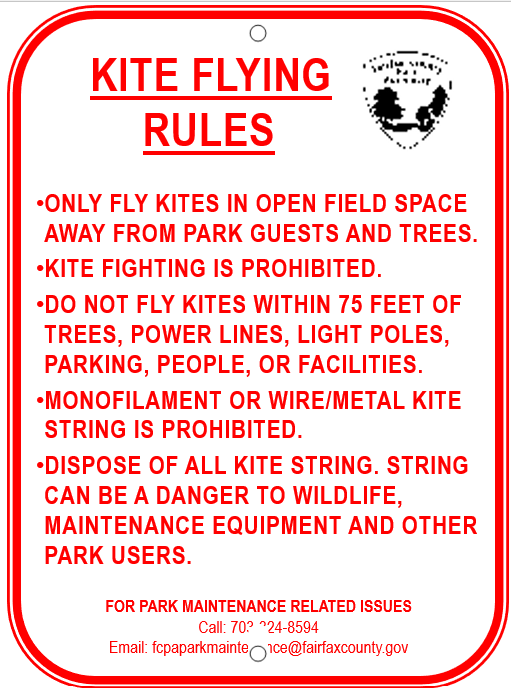
For more information, call the Park Authority Public Information Office at 703-324-8662.
Community Entranceway Landscaping
/in Curated Resources, News and Updates, Success Stories/by Mary Ann BushArticle, Photos, and Images: Courtesy of Plant NOVA Natives: Water’s Edge at Fair Lakes Homeowners Association
The Audubon-at-Home program in partnership with Plant NOVA Natives obtained a grant from Dominion Energy to award seven matching mini-grants to community associations for converting their entranceway landscaping to all Virginia native plants. The mini-grants stipulated that the landscaping be designed so that the community’s standard landscape company could maintain it. The projects were installed in the fall of 2021. The “after” photos are from Spring 2022. Below, the organizer from Water’s Edge at Fair Lakes Homeowners Association shared some thoughts about their experience that may help other communities.
Note: Any community or individual in Northern Virginia who wish to use their property for wildlife sanctuary is encouraged to invite an Audubon-at-Home volunteer to walk their property with them and strategize.
In Fairfax County, The Water’s Edge at Fair Lakes Homeowners Association participated in the program.
From the Water’s Edge Organizers:
It is so exciting to see these plants come back this year! We have several signs that you will notice in the pics. Besides the Native Plants sign, there are some smaller signs as well. The smaller green one requests that the plants not be sprayed. There are also small signs with numbers. The numbers correlate to the educational piece, which is the QR codes in multiple places, which invite people to learn more about the plant that is there. This is something we said we would have by this spring. We are still looking into other educational opportunities for the community and will take any chance to share the work that has been done and the benefits associated with planting natives. Since the entrance is located on a walking path in the area, the QR codes are placed so that anyone walking by has the opportunity to learn more about any of the plants. On our part, having this done and engaging with the work has prompted us to consider only natives in other parts of the neighborhood as trees need to be replaced, beds need to be rebuilt, and our own properties need plantings. The invasives that were in the area, such as the lilies, have been difficult to remove, and they came back in full force this year. Hands Dirty came back to remove more of them, and we will continue to monitor the need for removal. During bouts of hot and/or dry weather, we are watering by hand or hiring the landscaping company to water the plants at the entrance as well as other native plantings we are working to establish.
Additional articles about this program and participants:
Welcoming Visitors with Native Plant Landscaping — Audubon Society of Northern Virginia (audubonva.org)
https://www.plantnovanatives.org/entranceway-landscaping
Plant List:
Switchgrass (Panicum virgatam ‘Shenandoah’
Southern Wax Myrtle (Morella cerifera)
Butterfly Weed (Asclepias tuberosa)
Eastern Bluestar (Amsonia tabernaemontana)
Pennsylvania Sedge) (Carex pensylvanica)
Wood Aster
Woodland Phlox (Phlox diviracata) ‘Sherwood Purple’
Native azalea
Meadow Anemone
American Strawberrybush (Euonymyous americanus)
Aromatic Sumac (Rhus aromatica)
Moss Phlox (Phlox subulata) ‘Emerald Pink’
Beardtongue (Penstemon digitalis)
Black-eyed Susan
Culver’s Root
False Blue Indigo (Baptisia australis)
Golden Ragwort (Packera aurea)
Mountain Mint
Beebalm
Sundrops
Before Picture and After Pictures:

Courtesy of Plant NOVA Natives: Water’s Edge at Fair Lakes Homeowners Association

Courtesy of Plant NOVA Natives: Water’s Edge at Fair Lakes Homeowners Association
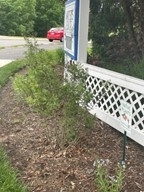
Courtesy of Plant NOVA Natives: Water’s Edge at Fair Lakes Homeowners Association
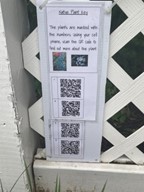
Courtesy of Plant NOVA Natives: Water’s Edge at Fair Lakes Homeowners Association



